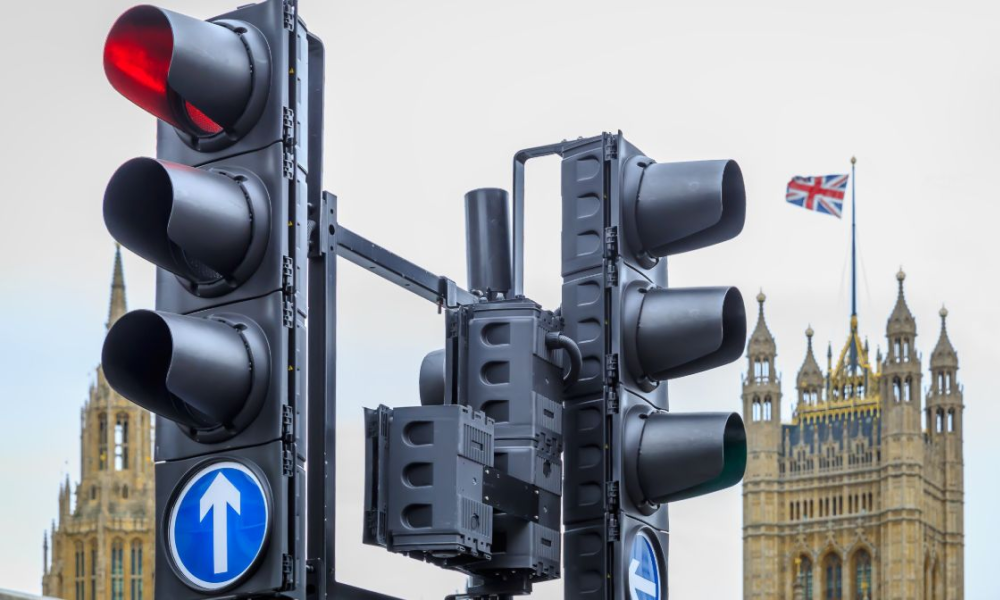
We talk a lot about emerging technologies and new applications for Intelligent Transport Systems (ITS) to manage and optimise the flow of pedestrians, cyclists and vehicles, but the stark reality for many local highway authorities is that they don't have budgets to keep their existing equipment up-to-date, let alone to invest in technologies which might still prove not to be the optimal choice in a few years' time.
In what will almost inevitably be a challenging financial period for highway authorities over the next few years, we set out realistic steps to leverage the most benefit from their existing ITS infrastructure, despite financial and skills challenges, by focusing on cost-effective and collaborative strategies.
Most authorities have, by now, already undertaken a basic level of technology refreshment. However, the recent rush to procure replacement halogen lamps for traffic signals whilst these are still available, is a clear indication that there are unacceptably large quantities of obsolete roadside equipment across the UK. To put this into context, most traffic equipment has a 15-year design life, but it is very common to find equipment which is at least ten years beyond this. Unfortunately, although this would appear to be providing local authorities much better value, by extending the service life of installations by huge margins, in reality it typically has a range of negative impacts. Older equipment often consumes more power, requires more maintenance visits due to being less reliable and is much more difficult to support due to a lack of spares and technical knowledge. In addition, older technologies are far more difficult to modify to support new operational requirements or to work with emerging technologies.
To overcome these issues, initiatives, such as The Department for Transport's (DfT) Obsolescence Grant have encouraged highway authorities to renew equipment, in order to improve reliability and to achieve a basic level of functionality to future proof them to work with new requirements over the coming years, such as connected vehicles. However, in what is increasingly looking to be a new period of austerity, opportunities for these types of additional funding streams will diminish along with increasing pressures on local authority budgets.

So, what steps can local highway authorities take to improve their situation?
Over the years, most local authorities have seen the size and capabilities of their traffic teams dwindle to such an extent that it is difficult to resource daily tasks, let alone to undertake modernisation or improvement projects. It is unrealistic to expect that team sizes will ever return to how they were 30 or 40 years ago, but there are some steps which can help to improve their effectiveness.
It is very difficult to recruit experienced staff, therefore it is essential to upskill the existing workforce, this will not only provide more inhouse capabilities but also improve staff retention. Whilst doing this, offering technical apprenticeships provides an excellent opportunity to bring new entrants into the sector and to 'mould' these to enhance the teams' capabilities.
Also, don't be afraid to hire in expertise and skills to deal with specific requirements by using a specialist, these are often much better value and have much more in-depth technical knowledge than using large multi-disciplinary consultancies. Small firms can often provide ad-hoc or task-based support without the long-term commitment of hiring staff.
With thoughtful planning, it might also be possible to work collaboratively with neighbouring authorities. By reviewing staff competencies and experience, it may be possible to mitigate skills shortages and reduce individual authority costs by 'swapping' capabilities. This will also provide opportunities for staff development and to learn from other practitioner's experience. It is worth bearing in mind that many tasks can be performed remotely, so staff will often be able to undertake this without undue impact on their working practices.

Instead of expensive infrastructure overhauls, focus on understanding the current state of the ITS equipment installed and operating on the road network. To start this process, it is essential that there is an up-to-date equipment inventory. This should be detailed enough to provide information about the age and type of technologies used at each installation, along with operating capabilities and fault rates. Although fault management systems can provide most of this information, there may be merit in using a simple spreadsheet to allow additional information such as accident statistics to be included, and to sort the records to provide a means to prioritise interventions.
The fault log within fault management systems should also be carefully examined to reveal if there are any inherent issues with equipment. It is quite common for faults to be masked or turned off because of known issues, but these may not then show up in the inventory assessment.
In order to ensure that equipment continues to work safely, most highway authorities have maintenance contracts in place for their installations. However, this does not ensure the operational requirements for an installation are maintained over the years, for example to keep up with increasing volumes of traffic or new patterns of movements. It is important therefore to ensure that each installation is working optimally by undertaking periodic operational assessments and validations. It is surprisingly common for misconnected detectors or out of date timings or plan settings to have a negative impact on the efficiency that installations achieve.
It is also worth reviewing if more value can be achieved with installations, by using current assets more intelligently. It could be possible to rationalise capabilities to achieve savings on power, communications and maintenance costs by incorporating the functionality into another installation, such as a traffic signal controller installation.
Once the installations have been 'base-lined', it will be possible to undertake a repeatable and intelligent assessment of the entire ITS inventory in order to prioritise and justify new or replacement equipment. This can then be used alongside policy developments and planning issues to inform on required investment decisions. Alignments with active and public transport initiatives, along with place making projects, can be useful sources to finance improvements to ITS assets.
To facilitate progress, an ITS strategy should be used to allow effective planning for adopting suitable technologies and to align capabilities to policy requirements. This will then allow informed financial decisions to be made with a pathway to improving the state and capabilities of ITS assets.
Over the coming years, data and communications are set to revolutionise mobility and consequentially the way in which Intelligent Transport Systems infrastructure will operate. Modern traffic systems and traffic signal controllers now have capabilities built-in to allow for these requirements to be implemented, even though much of the detail still needs to be defined or adopted. This does though provide assurance that investment in these key technology 'building blocks' will allow future requirements to be incorporated without undue issues.
In order to reduce congestion and emissions, many cities are reapportioning street space to active and public transport modes. To achieve efficient operation, it is essential to use a modern adaptive traffic control system that coordinates signals to respond effectively to all transport modes. This improves journey reliability and reduces emissions without needing new physical infrastructure. These modern, data-driven systems, will also provide the ability to work with emerging capabilities, such as Predictive Maintenance, Digital Twins and Mobility as a Service integrations, to offer improvements to urban centres. Using cloud-based systems will allow implementations to be scaled easily as requirements increase and streamlines data sharing for better decision-making.